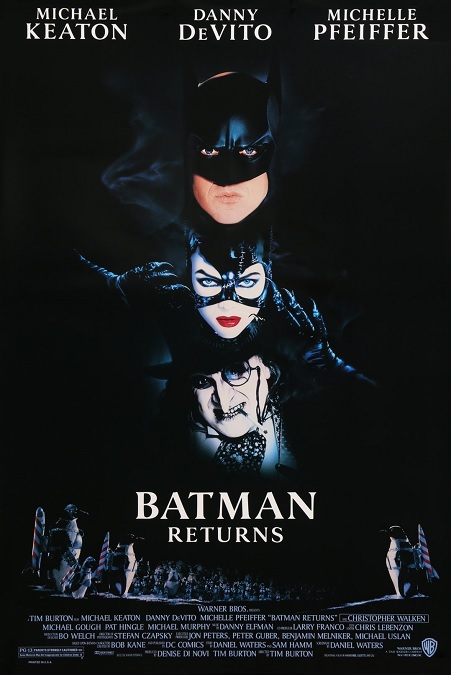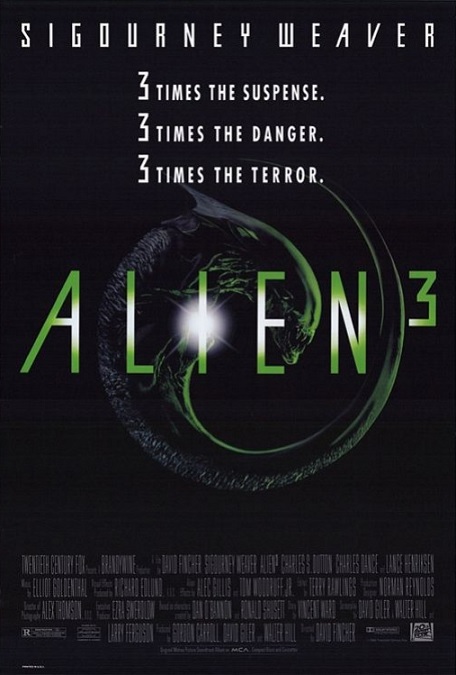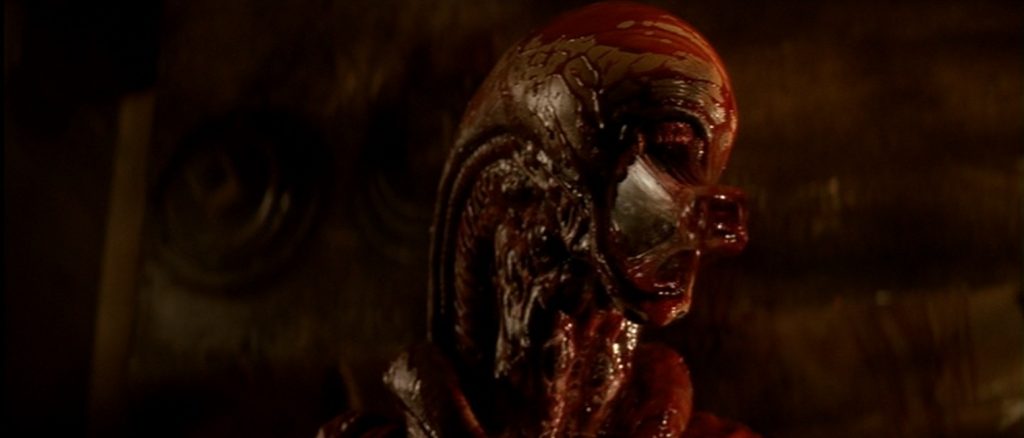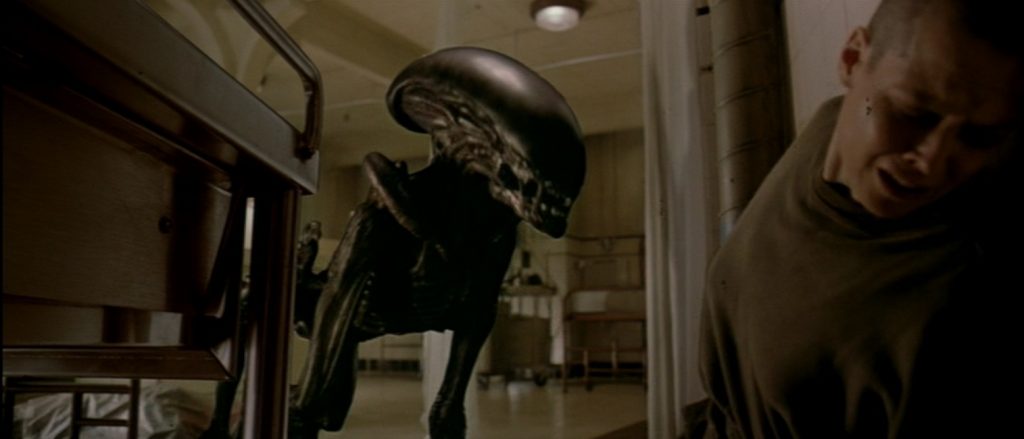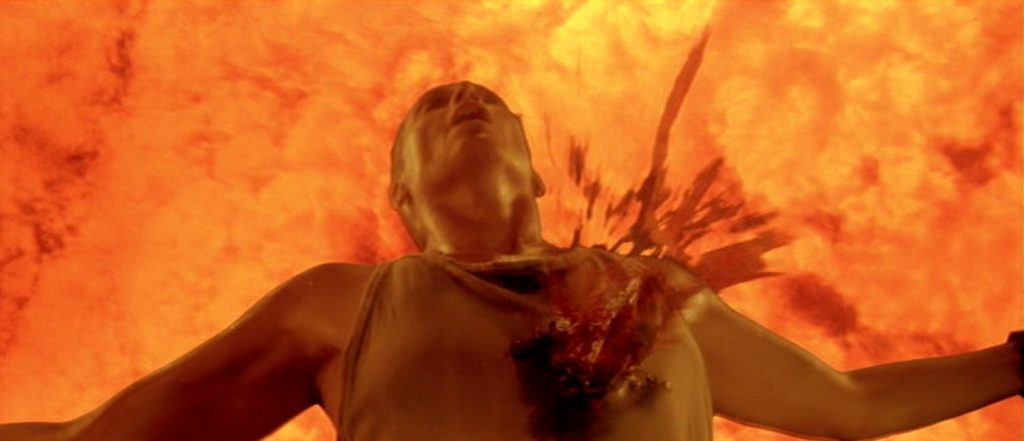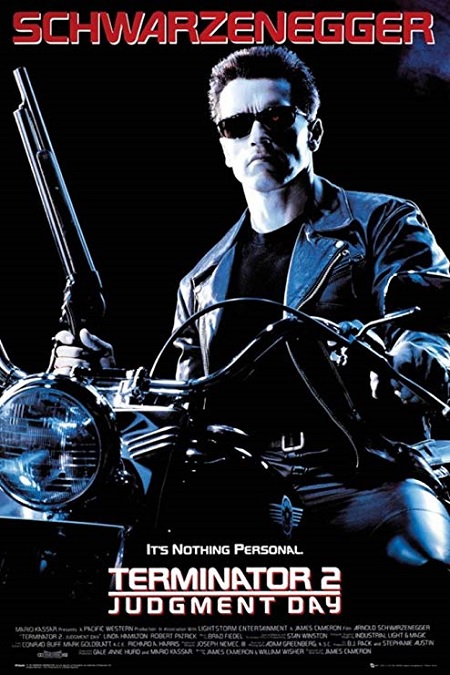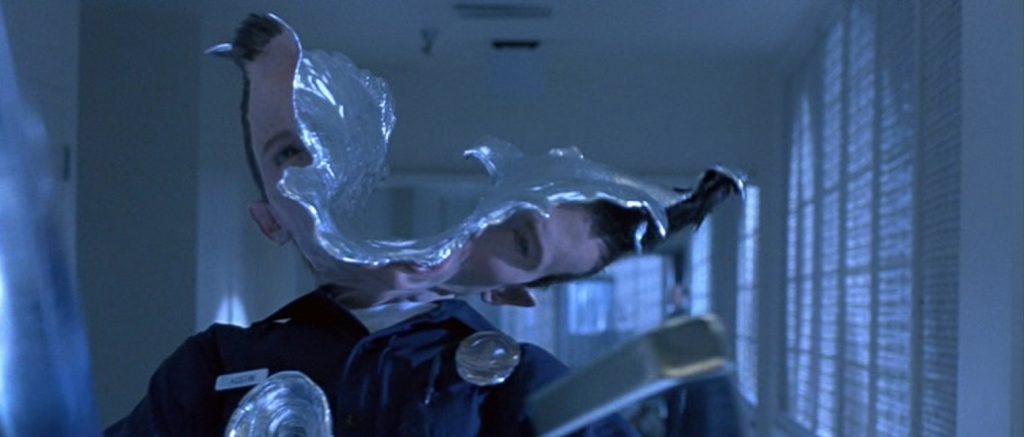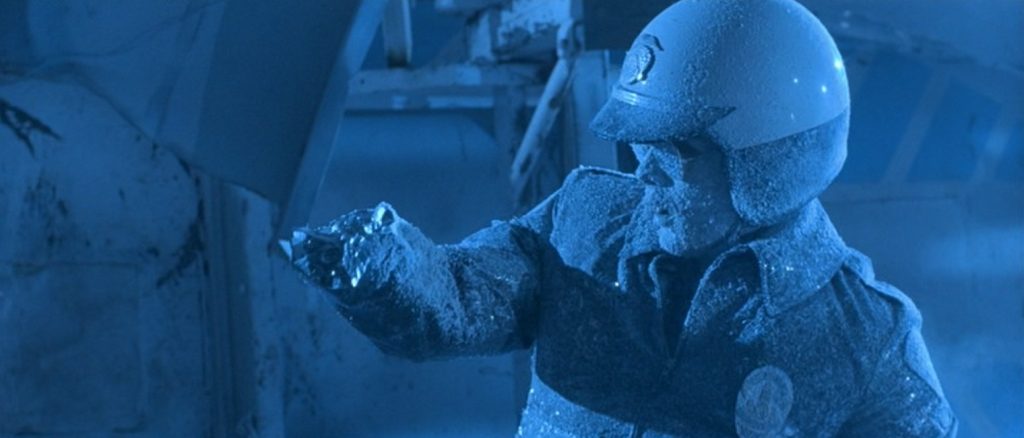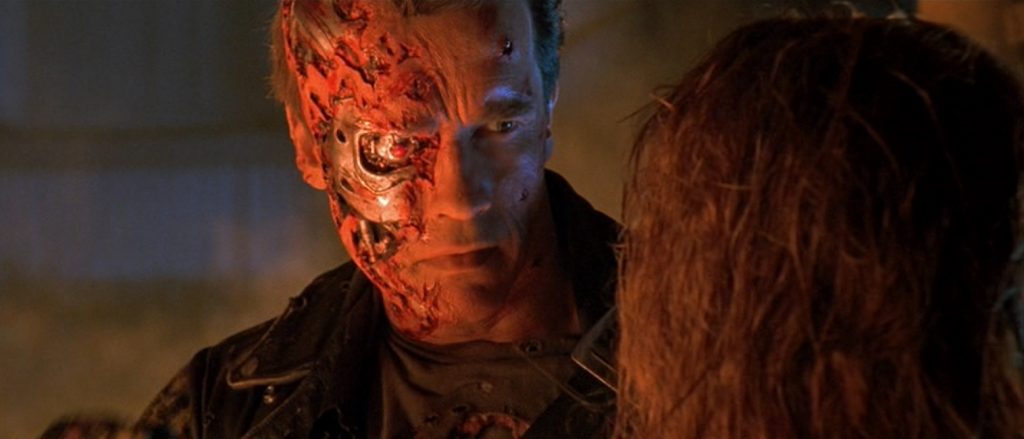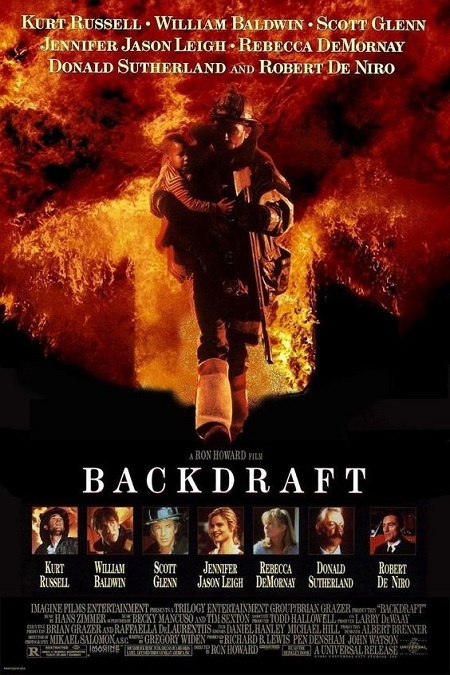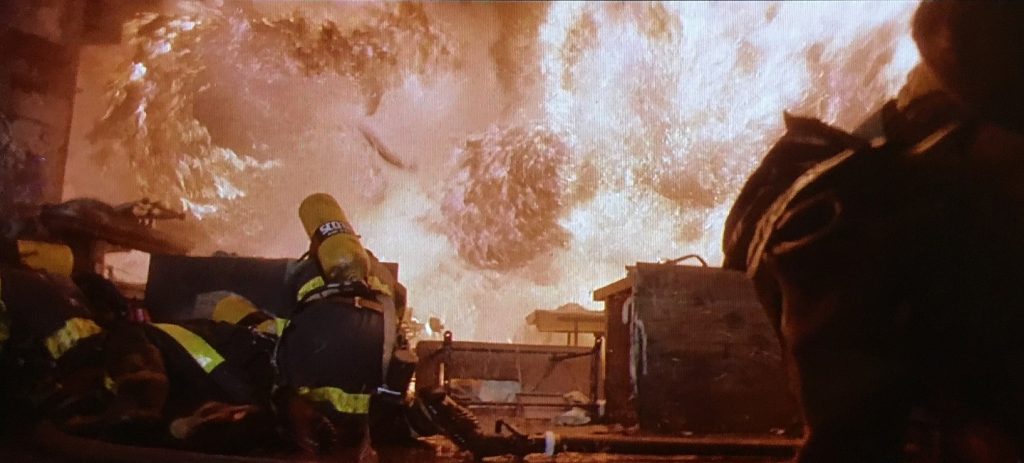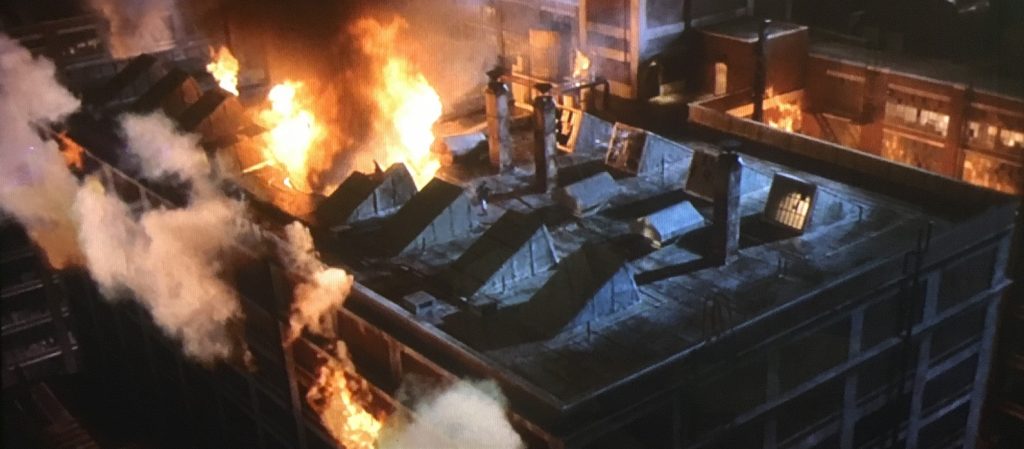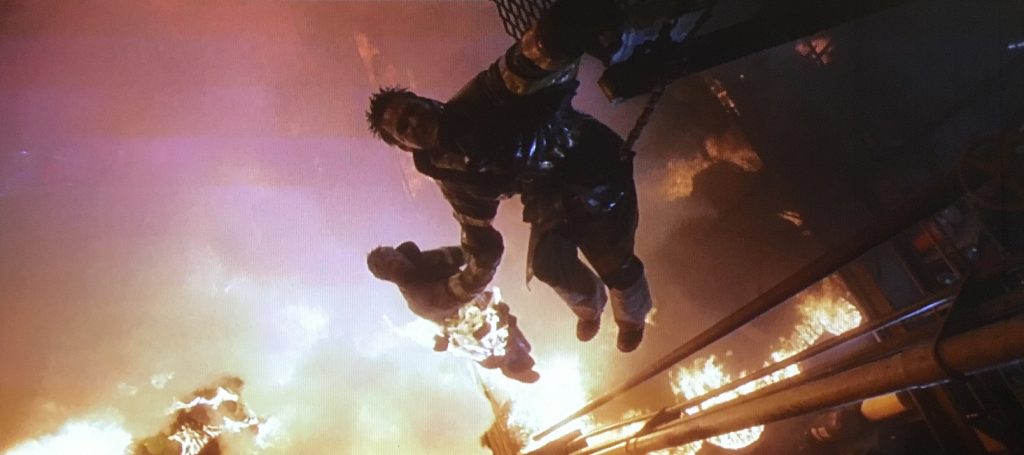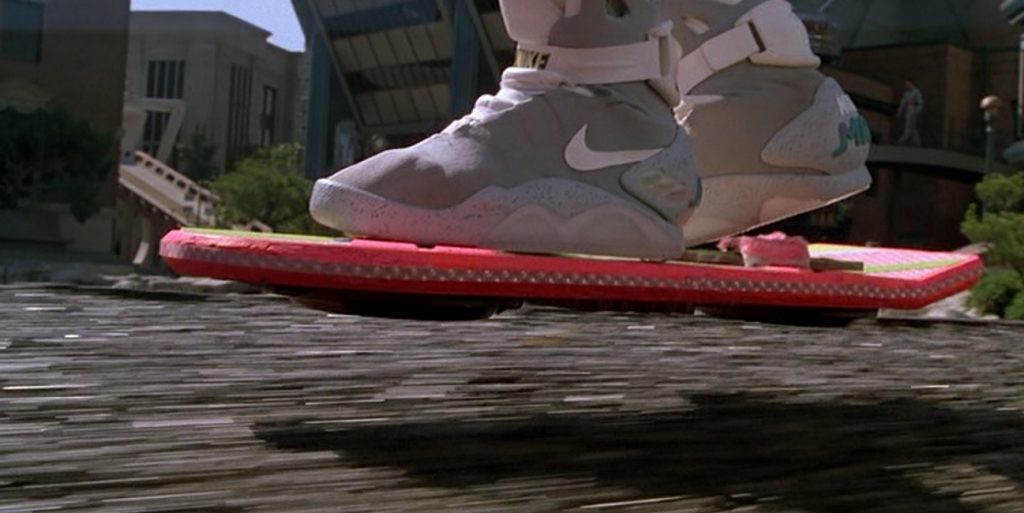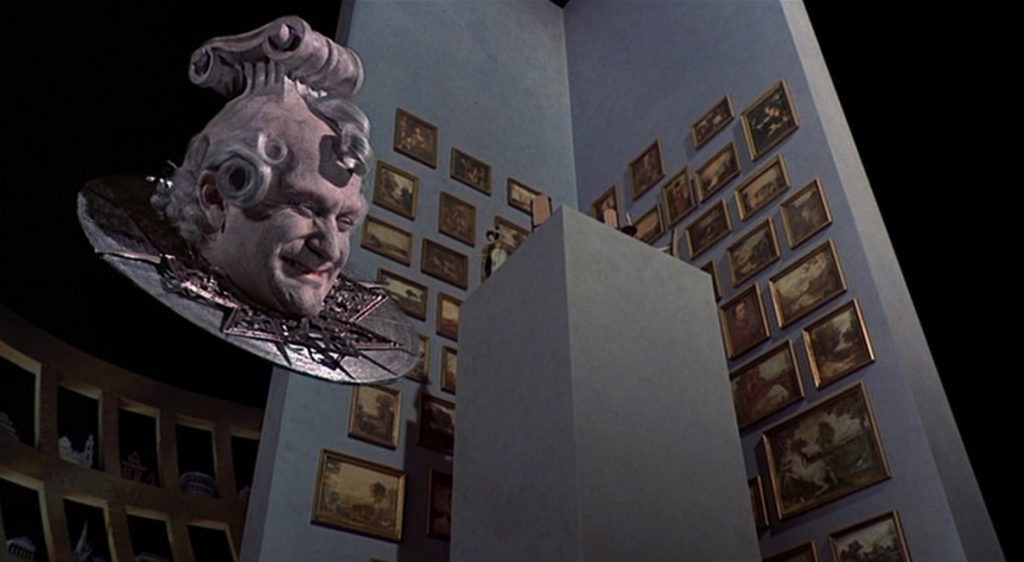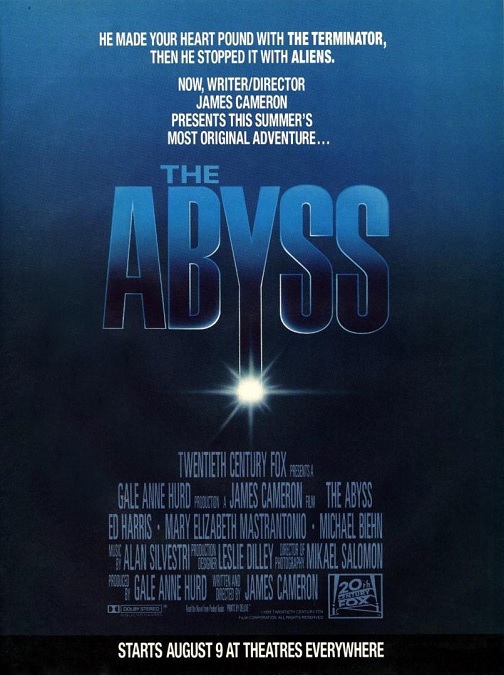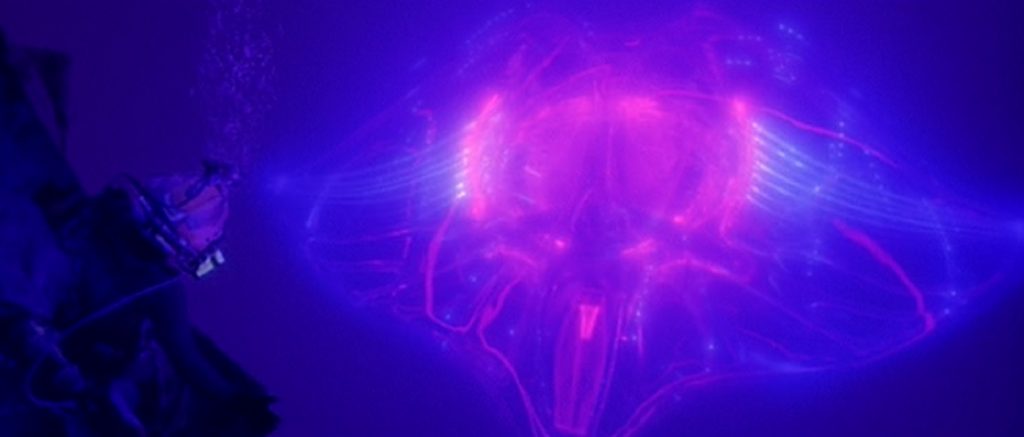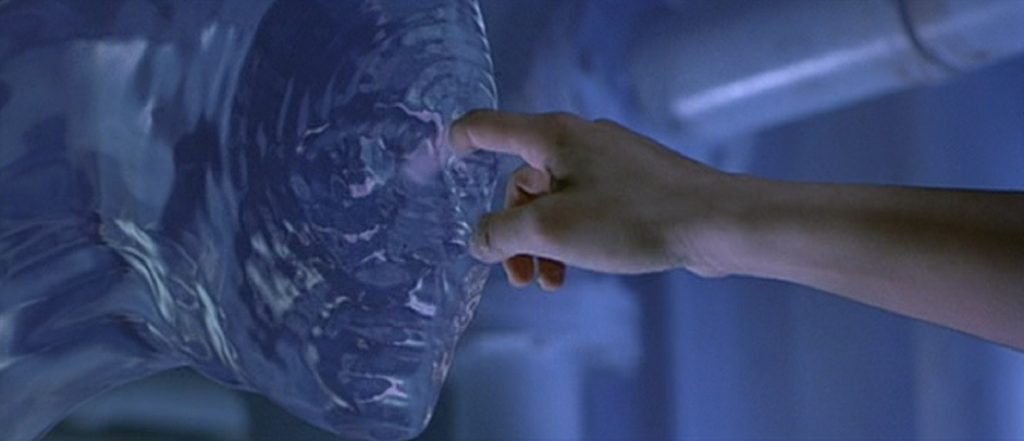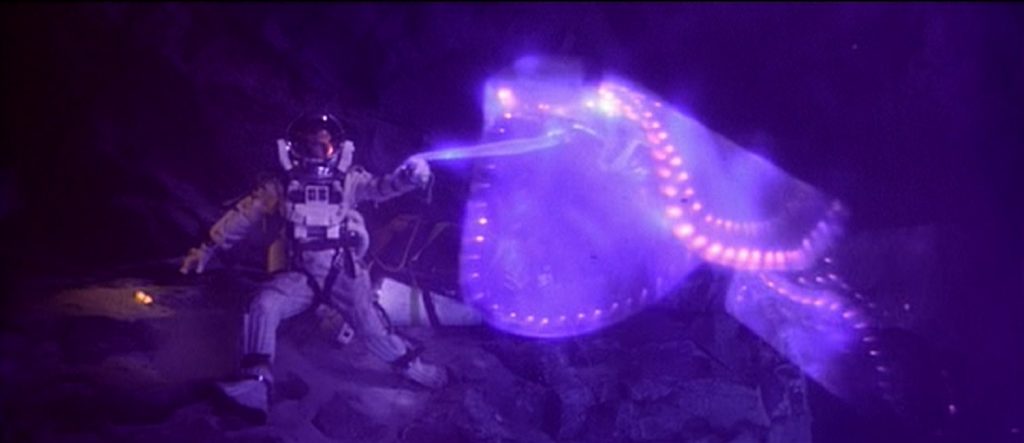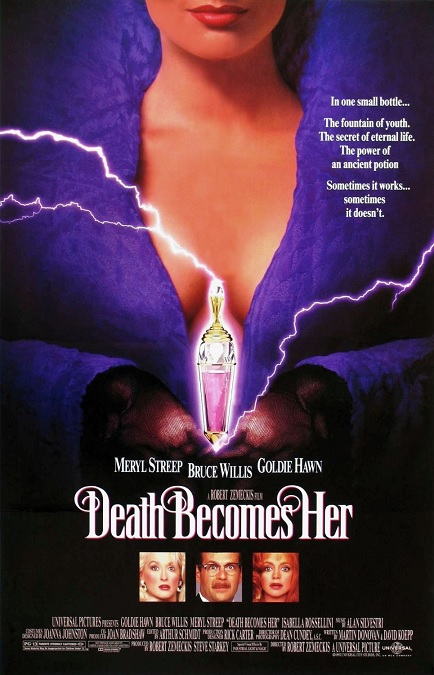
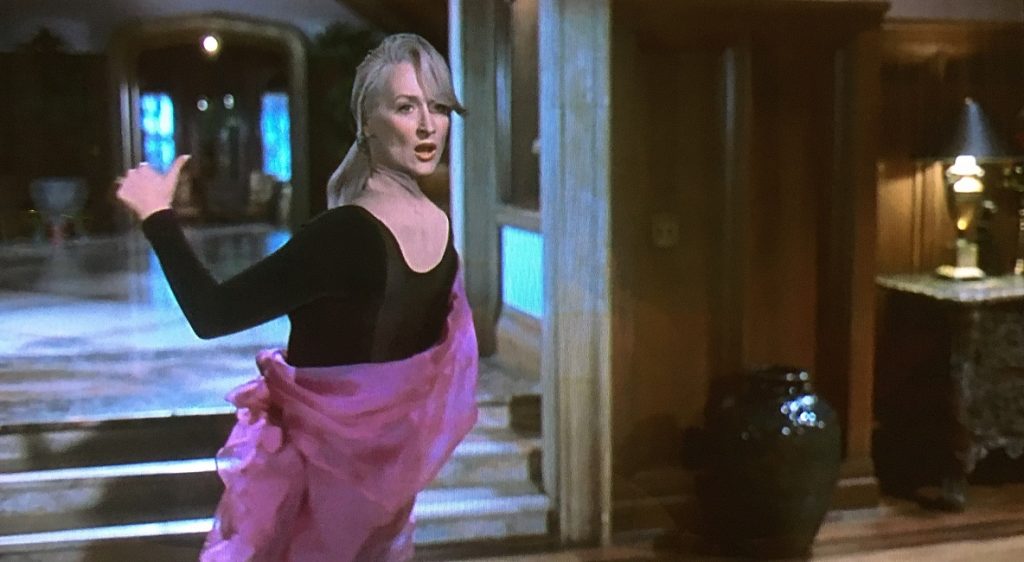
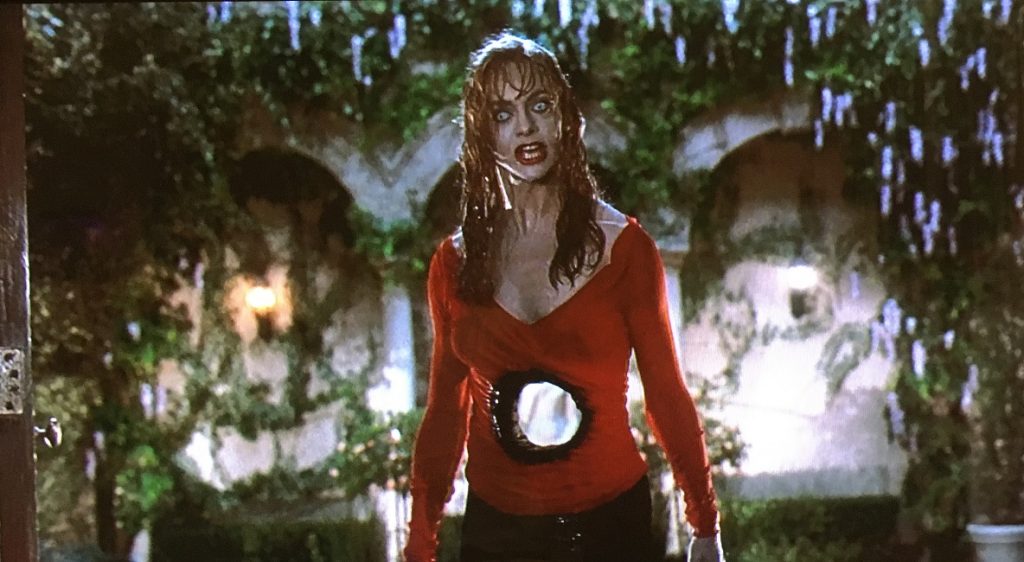
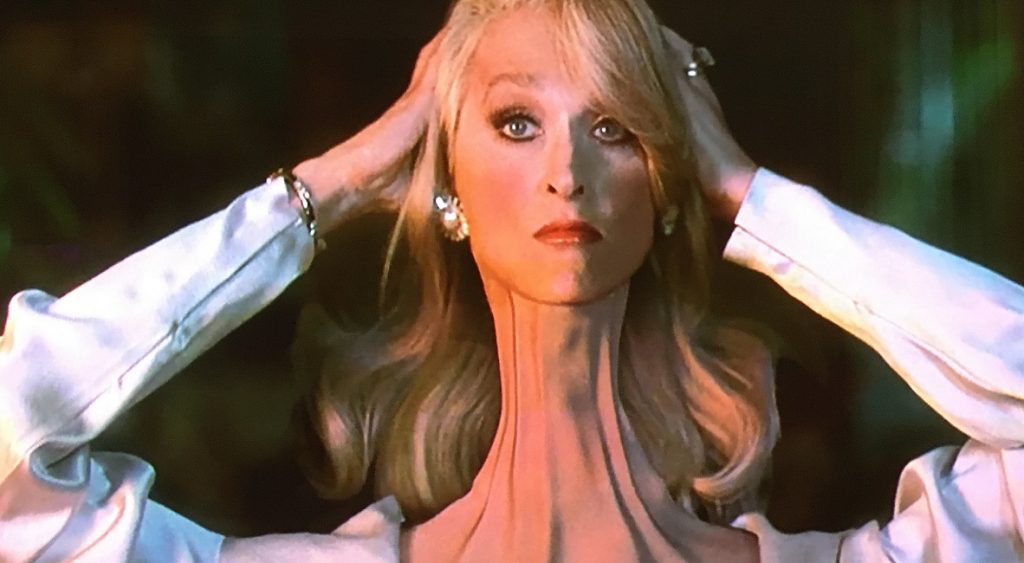
Death Becomes Her – 1992 (WINNER)

This was a fun movie with some fun visual effects. They made use of new techniques that gave audiences things they had never seen before. Once again, ILM made some impressive leaps forward in CGI effects that lent a greater realism to impossible images on the big screen. This movie and its special effects were a pleasure to watch.
According to the ILM website, “ILM’s work in Death Becomes Her predates many of the digital advancements and breakthroughs of Jurassic Park, which came out only a year later. Experimenting in the development of commercial and proprietary software, the film marked the first time human skin texture had been computer generated.” It was really very cool and looked very realistic.
Most of the movie was pretty simple without many significant special effects. In fact, the only real noticeable effect right at the beginning of the film was a single shot that panned down from the sky, passing a background of big city skyscrapers, until it came to rest on a Broadway-like theatre. The city-scape looked remarkably fake, and I don’t know if that was intentional.
Then it was pure drama until the second half of the film. When Madeline goes to visit Lisa and drinks the magic potion, the effects began to ramp up. The potion itself was actually kind of cool. It was a glowing pink liquid that looked like it had a string of electricity floating in it. After Madeline drinks it, the CGI morphing transformation of her face and body from old to young was perfectly executed.
But then she is pushed down a grand staircase, breaking her neck and leaving her in a twisted pile of distorted limbs. Then she hilariously stands and tries to walk with her head facing the wrong way on her shoulders. It was done using a combination of three different shots composited together. One was Meryl Streep with a blue-screen mask on her head as she walked backwards through the scene, the second was a clean shot of the room itself, and the third was Meryl in a blue-screen body suit so that only her head was showing. I also saw some behind-the-scenes footage in which an animatronic Meryl was used.
Later, she shoots her nemesis, Helen, through the stomach with a shotgun, a death from which she also recovers, though there is a gaping hole going right through her torso. The two fight, mangling each other in unbelievable ways. The effects, though macabre and gruesome, were fantastic. Madeline’s head gets smashed and stretched at incredible angles while Helen has a shovel handle thrown through the hole in her stomach. It was funny, and yet disturbing at the same time.
I read somewhere that the filmmakers were somewhat surprised at their Oscar win, saying that the movie wasn’t an effects driven movie. It was a comedy that happened to have effects in it. But I beg to differ. When I think of the movie, it is the visual effects that really stand out in my mind because they were so good!
